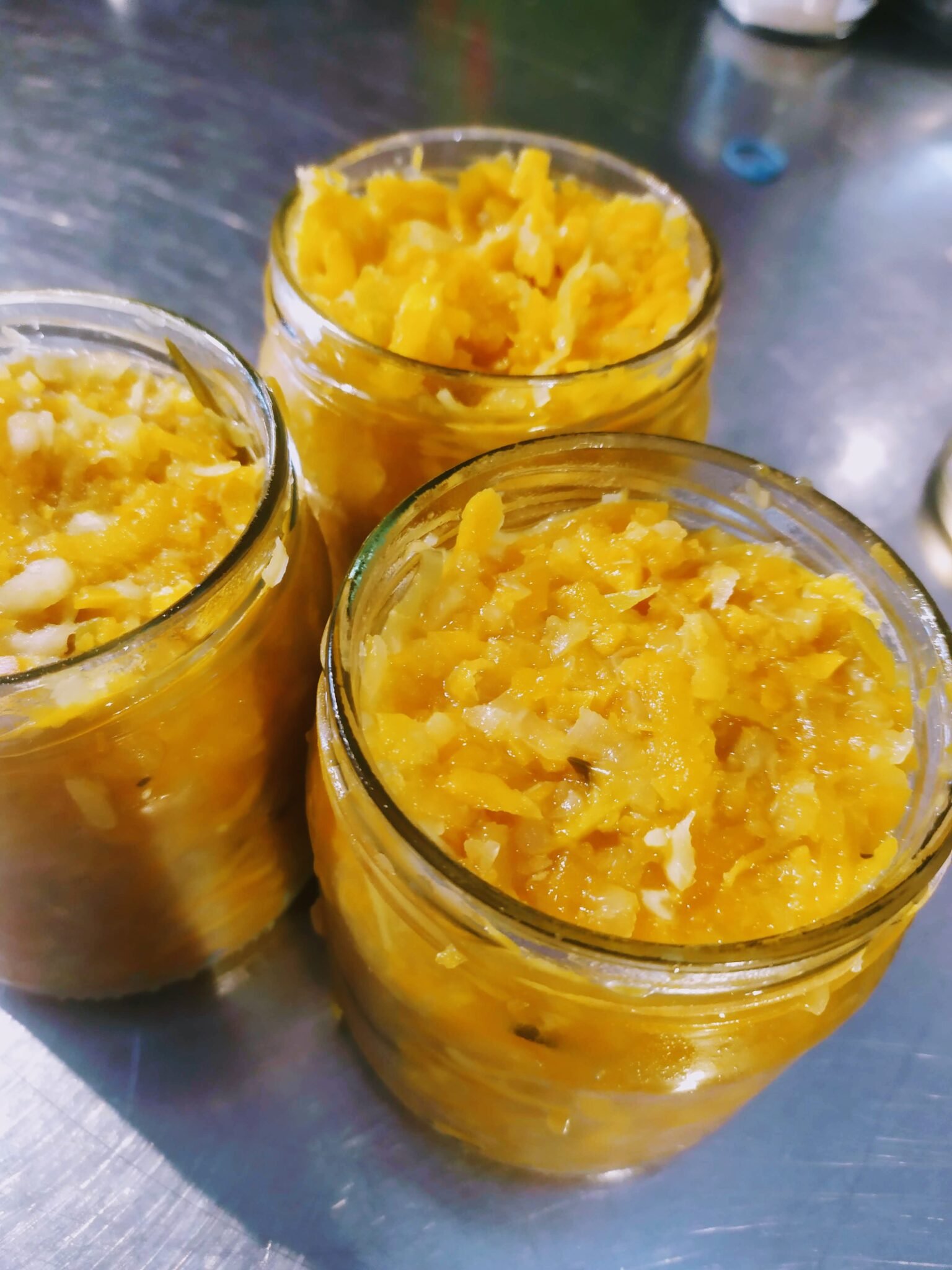We have always grown a mix of pumpkins and winter squashes and have mixed them wildly in this recipe. It turns out delicious every time. The latest mix consisted of Black Forest, Hokkaido, Butternut, and some self-seeded hybrids from the compost area.
Since pumpkin is quite sweet, it’s good to balance it with something slightly peppery like cabbage, daikon, or kohlrabi. This results in a really fresh and slightly sparkling ferment.



Ingredients:
20kg pumpkin/winter squash – peeled and seeded. 4kg daikon or cabbage 300g ginger (adjust more or less depending on desired spiciness) 100g whole garlic cloves 3 leeks (red or yellow onions also work) – shredded Rosemary Pink peppercorns 1.5% salt (approximately 375g)
Chili can be good here, but we usually make it without.
Here’s how to make it:
Grate the pumpkin, daikon/cabbage, and ginger.
Layer them with salt and the spices, then squeeze with your hands or pound with a sauerkraut stomper. Place a weight or plate on top, making sure everything is covered with liquid – if not, add a little 1.5% salt solution. Seal with a lid and airlock. Let it sit at room temperature (18-23 degrees Celsius) for 10 days, then at least 2 months in the refrigerator (below 8 degrees Celsius) before transferring it to jars.
When fermenting directly in jars
When fermenting in jars, keep in mind that pressure will build up due to carbon dioxide being a plentiful byproduct of the initial bacterial activity. “Burp” the jars during the first few days and keep them on a tray as some liquid may overflow – don’t fully open the lid, just enough to release the pressure. Leave 1-1.5cm of headspace under the lid to prevent excessive overflow (this is not necessary when transfering fully fermented vegetables from a larger container as there will be little pressure build up at that point). If a significant amount of liquid comes out, it can be replaced with a new 1.5-2% salt solution (15-20 grams per liter of water) afterwards.

